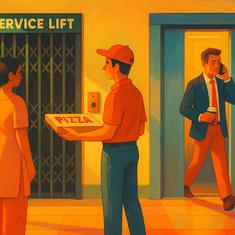Delhi recorded 57 ‘very poor’ air quality days in 2024-’25, Byrnihat was highest at 66
The air quality index was in the ‘poor’ category for 132 days each in Patna and Gurugram, the Centre told Parliament.

Delhi recorded 57 days when the air quality was “very poor” and 91 days when it was “poor” in the financial year 2024-’25, the Union Ministry of Environment told Parliament on Monday.
In a written reply in the Lok Sabha, Minister of State Kirti Vardhan Singh said that Byrnihat on the Assam-Meghalaya border saw the highest number of “very poor” air quality days at 66. The town recorded the air quality slipping to “poor” on 98 days.
Patna in Bihar and Haryana’s Gurugram saw the highest number of poor air quality days at 132 each in 2024-’25, followed by Hajipur at 112, Asansol at 109 and Greater Noida at 105, said Singh.
An air quality index value between 201 and 300 is considered “poor”, while an index value between 301 and 400 is considered “very poor”. Air quality in the “very poor” category can lead to respiratory illness on prolonged exposure.
Vulnerable groups, including children under five years of age, elderly persons, pregnant women and those with respiratory or heart conditions, may experience adverse health effects even after short exposure.
In March, the World Air Quality Report pointed out that 13 of the world’s 20 most polluted cities in 2024 were in India, with Byrnihat topping the list.
Delhi was the most polluted capital city in the world. India was the fifth most polluted country, down from third in 2023, and home to six of the nine most polluted global cities.
The report analysed PM2.5 air quality data collected from 8,954 cities in 138 countries, regions and territories.
PM2.5 refers to tiny airborne particulate matter that is about 30 times smaller than the width of a human hair and can easily be breathed into the lungs and the bloodstream.
The Indian cities featured in the 20 most polluted places are: Byrnihat, Delhi, Punjab’s Mullanpur, Faridabad, Loni, Gurugram, Ganganagar, Greater Noida, Bhiwadi, Muzaffarnagar, Hanumangarh and Noida.
Days after the report, a parliamentary standing committee said it was shocked that the Ministry of Environment, Forest and Climate Change had utilised less than 1% of Rs 858 crore allocated to a scheme aimed at controlling pollution in 2024-’25.
The committee said that air, water and noise pollution had gone beyond permissible limits in the last few years and had serious consequences for public health and well-being. Air pollution has assumed “gigantic proportions” and has become a national issue, it added.
Also read: How Delhi’s location and geography influence its chronic pollution levels









